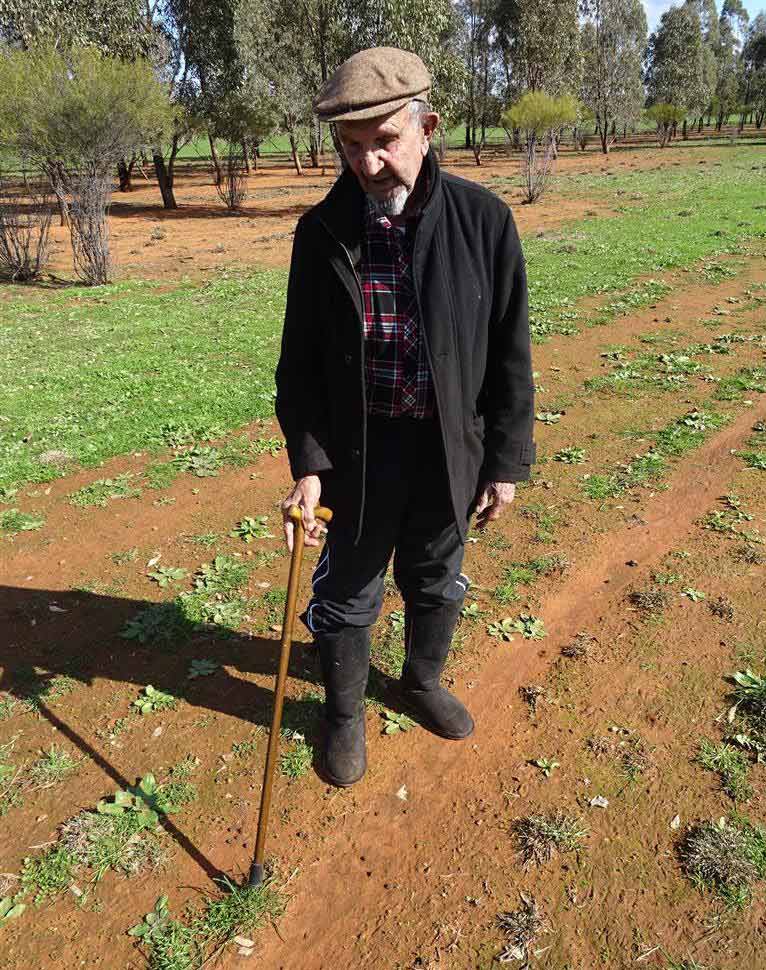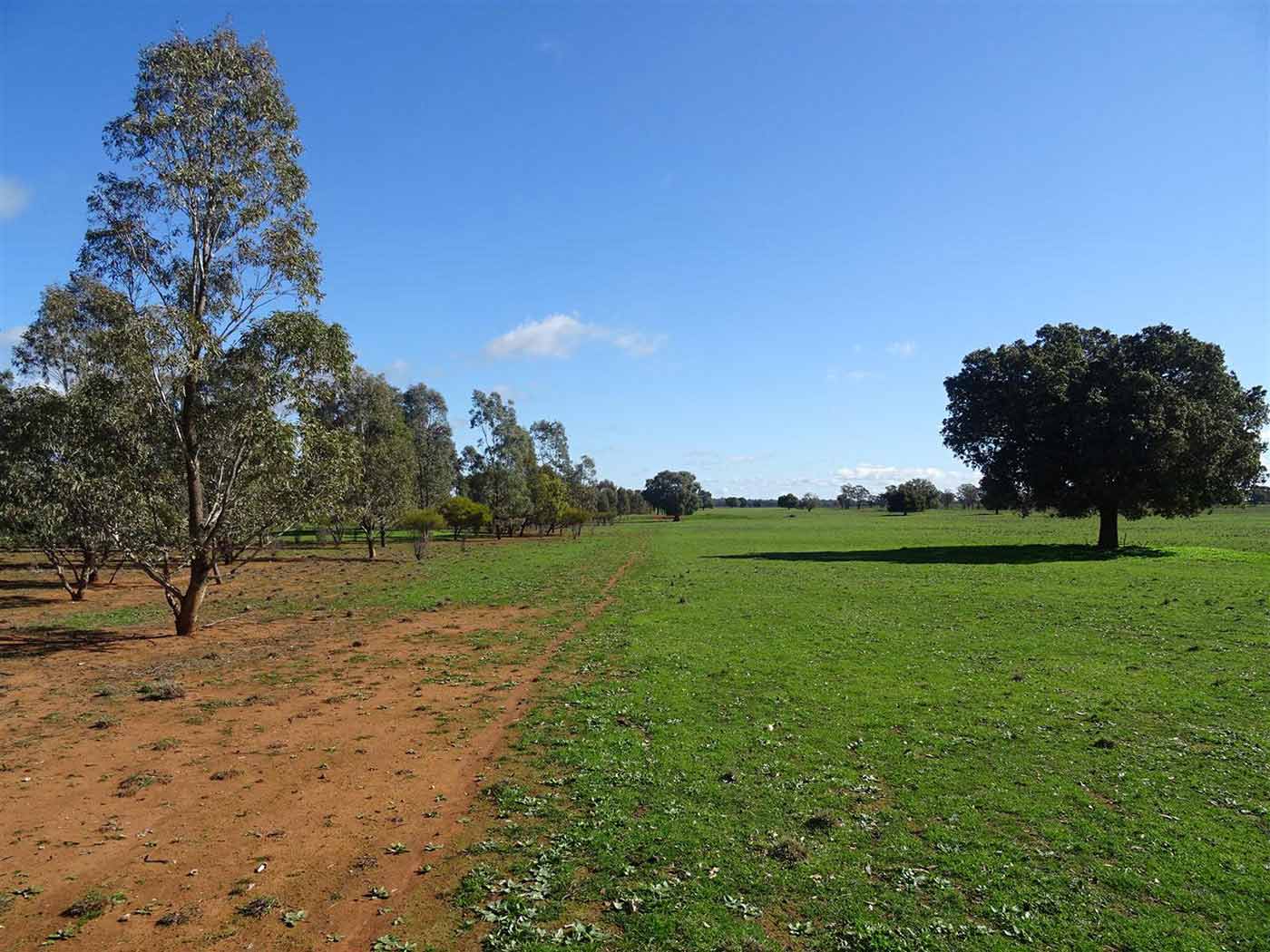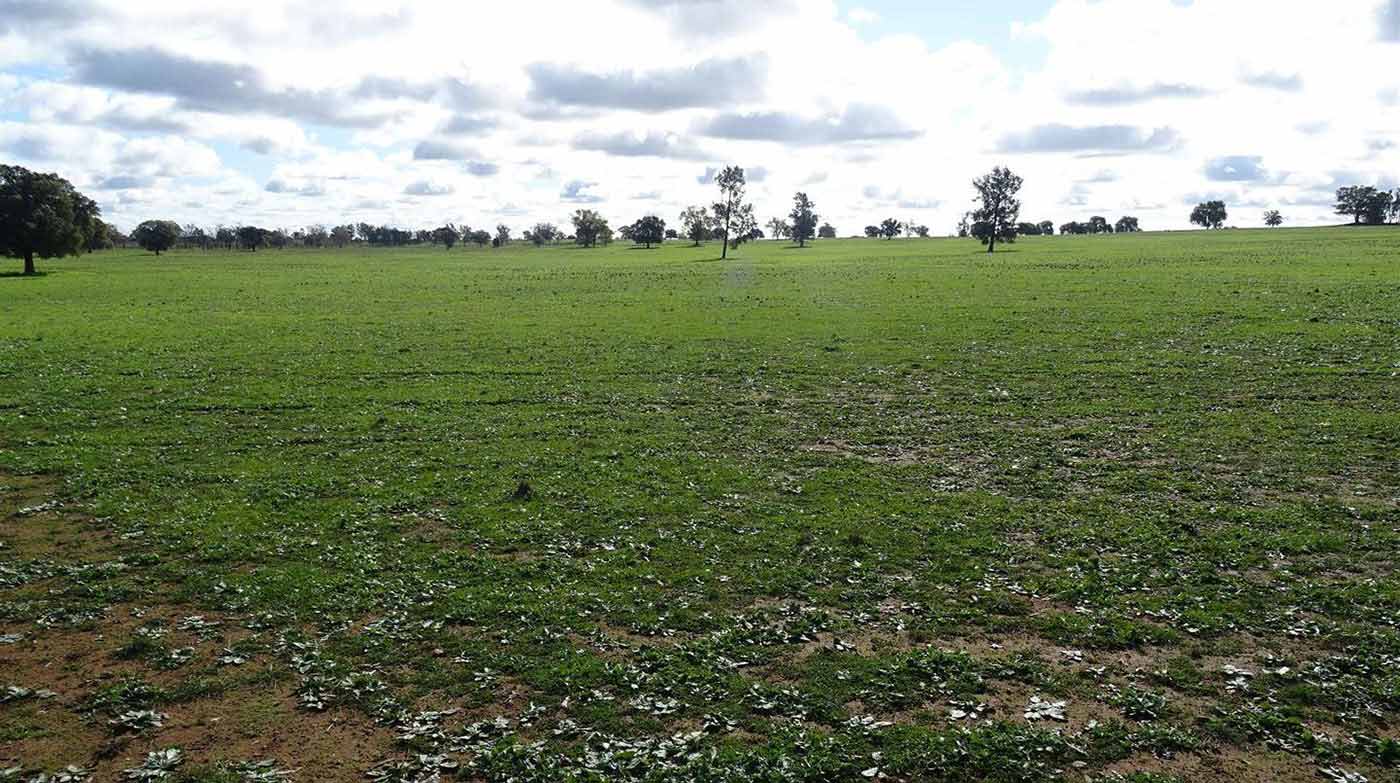28 July 2015
After a cup of tea and biscuits shared at Oakvale homestead, I drive Uncle Jimmy Ingram past the row of silver silos, along the hillside, to the southeast corner of North Taylors. Fresh midday air drifts northwards. Trees cast long winter shadows southwards. The paddock no longer holds the flock that grazed its grasses low.
We decide to walk down the gentle slope, sheltered from the southerly by the belt of young trees, towards the dam and its old kurrajongs. Uncle Jimmy, 80 years old, walks with a stick. As I turn on the recorder he says, ‘You ask the questions, and I’ll try to answer them, as best as I can.’

We move slowly, and I ask Uncle Jimmy where he grew up: ‘I was born in Narrandera, down at the bottom sandhills — now it’s called Weir’s Reserve — in 1935, delivered by an old Aboriginal midwife, I still remember her name, Eliza Morgan. She was an old Narungga — that was the clan around Narrandera, and all up through this country here — she was a midwife, a woman of high degree, I suppose you’d say, you know, one of the elite people in the clan.’
Uncle Jimmy explains that his family moved about the region, always seeking to avoid the roving officers of the Aborigines Welfare Board and their strident efforts to take Aboriginal children from their families: ‘We moved around a fair bit, because of the Welfare, you know. We used to make Narrandera our base camp. We used to go away, and come back, go away, and come back, you know.’
I ask Uncle Jimmy what work he took on, in his youth. He replies, ‘Everything and anything.’ Rouseabout, fruit and vegetable picker, road worker, shearer. He had passed through the Birrego area, where Oakvale is located, and thought the placename interesting, for its similarity to birrong, the local word for a heavy timber weapon.
We pass blossoming wattles and a particularly strapping yellow box sapling, as Uncle Jimmy explains the usefulness of yellow box and acacia timber, and the roots and bark of kurrajong trees.
Conversation turns to the purpose of The Paddock Report and its objective to make sense of the life we encounter inside North Taylors — on country that has nourished people and other species for so long — in relation to the monumental challenges of a warming globe.
Uncle Jimmy recalls the wet, cold winters of the 1950s: ‘The thing that sticks in my mind most is that from May til June/July, even right up until August, you used to get these bloomin’ fogs, and frosts, that used to come over the land. The fogs would be that thick, you could almost bloomin’ cut it. It would remain around most of the day, right up until about bloomin’ four o’clock in the afternoon, and then it would turn into rain. This went on all through the ’50s, right up until the ‘60s. And the frost on the ground, it would form on a dam, and you could almost walk on top.’
In the past, Uncle Jimmy reckons, tree cover kept land shaded, cool and moist. The warmth of summer would draw moisture from the ground, allowing summer storms to build, rumble and break. ‘But you don’t get any summer rains now because there’s not enough trees to keep the earth cool,’ he says.
Recently, on the road from Leeton to Whitton, he’d seen a 20-kilometre stretch cleared of every tree; dryland grazing country turned over to irrigated cotton. ‘It makes you angry, it makes you sad, but you can’t do nothing about it,’ Jimmy says. ‘If we go along the same path as we’ve been going, in the next 250 years, what will this be? A desert.’
We talk about North Taylors, how it used to be a wheat paddock, how native grasses have returned, their tussocks bulky enough to shelter newborn lambs. Uncle Jimmy stops and points his stick at grass beside the sheep track that snakes down to the dam: ‘I remember my old grandfather — Nyappa Jack was his tribal name, John Ingram — taking a patch of grass, out of one place where was a lot of grass, and moving it 200 yards to where there was none. When he came back 10 years after, he could have a kangaroo, or emu.
You can imagine, if there’s 20 young fellas, walking around, if they saw a grass like that in one place, and a bare patch, they’d dig that out, and you’d have 20 pieces of grass growing there, you know. Nearly all the clan did it. We were a sort of people who looked after everything that was our responsibility: the rivers, the trees, everything in this part of the world.’
We reach the dam and rest on some large red stones, presumably excavated a century or more ago, when the Taylors dug the small reservoir. I point to a nearby kurrajong, and mention that the walkers had rested in its dense shade last year (see Report number 3), while Uncle Jimmy’s grandson Pete had looked for ‘old man weed’ around the dam.
Jimmy still uses the traditional medicine plant, he explains, the leaves boiled into herbal tonic, the green liquid mixed with pig lard to make ointment. I ask him about Wiradjuri culture and understandings, whether they might guide those seeking to strengthen farmland, to prepare for the shocks of an angry climate. He replies, ‘Plant more trees. Do less ploughing. Leave the earth as it is. It will look after you, if you look after it.’
We start back towards the car and homestead. Clouds have gathered across the blue sky that had welcomed our mellow descent to the dam. The wind seems colder. We’re late for lunch, the farm tour, the energy of hopeful conversations on cherished country.
Explore more on the paddock report

